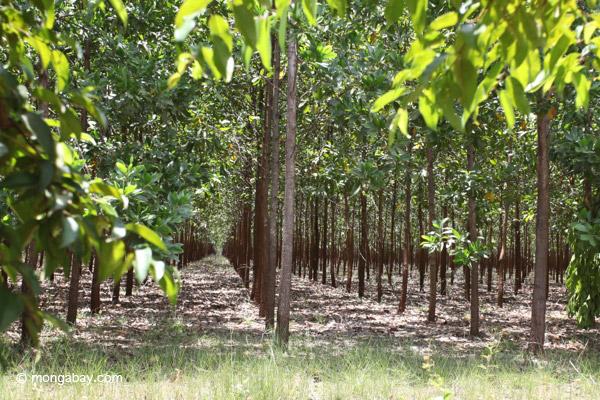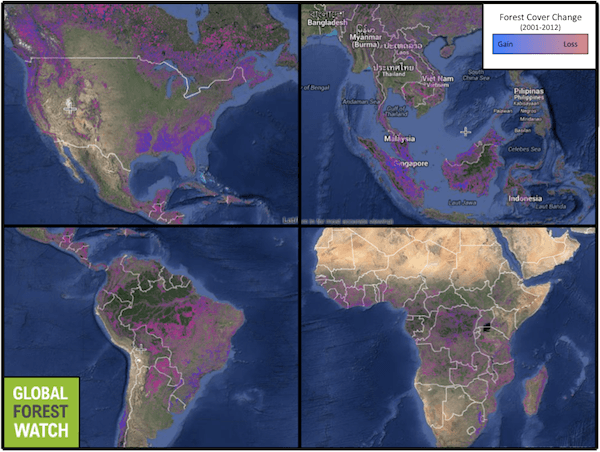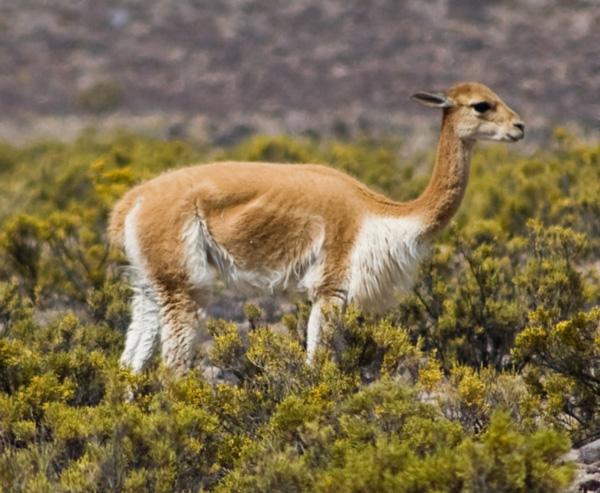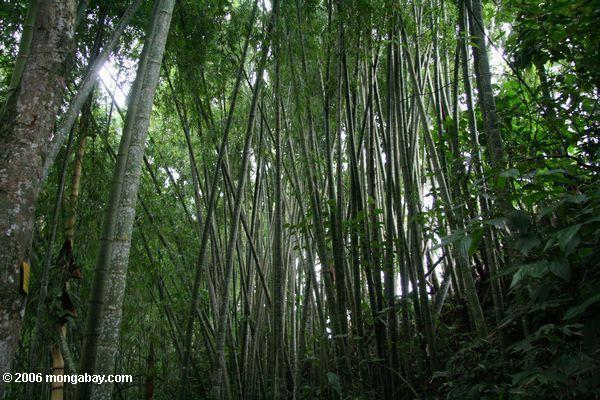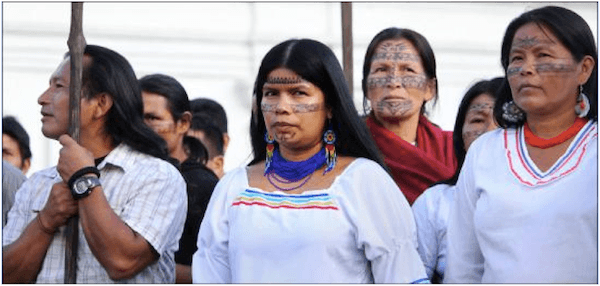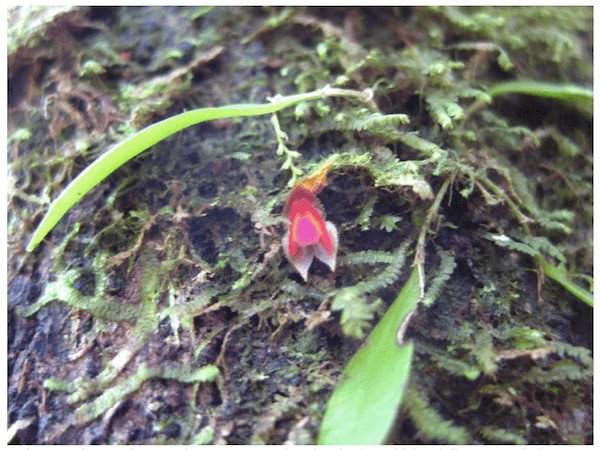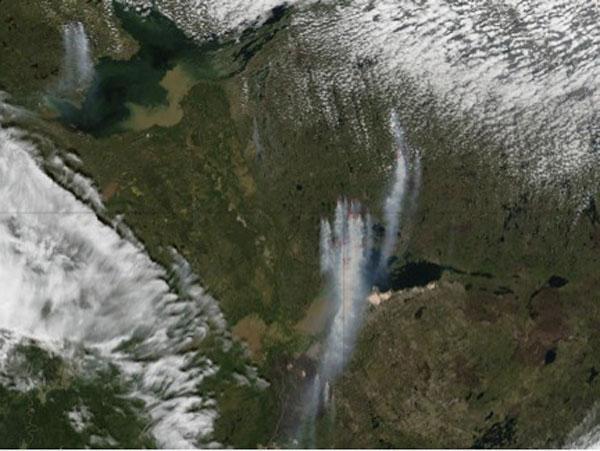Julian Moll-Rocek
Author
CONTACT ME
Website: news.mongabay.com
LATEST
When Is a Forest a Forest? How Definitions Affect Monitoring
“We live in a world of constant beta,” explains James Anderson, communications officer for the World Resources Institute’s (WRI) Forests program. Nearly every week features are tweaked on the Global Forest Watch (GFW) platform, an innovative mapping system that allows users to track changes in global forest extent, among other features.
|
Tracking Deforestation Through Satellite Imagery
Floating softly through the vacuum of space, the Landsat 7 satellite has faithfully provided imaging of the entirety of earth’s surface, every 16 days, since 1999. Now a series of technological developments has made this silent spectator a dominant force in tracking forests worldwide.
|
Peru’s First Environment Minister Dies at 74
Born to a poor family of coffee farmers on the western slopes of the Andes in 1940, Antonio Brack Egg became one of Peru’s most respected ecologists and led the country in protecting its profound biodiversity.
|
Bamboo Could Help Fight Global Warming
Restoring degraded land and forests with the world’s fastest growing plant, bamboo, can contribute to major carbon emission reductions. This is according to a new report released at the COP20 in Lima by the International Network for Bamboo and Rattan (INBAR) that discusses the massive potential of bamboo in fighting global warming, with bamboo forests projected to store more than one million tons of carbon by 2050 in China alone.
|
Indigenous Tribe Wins Battle
The Sarayaku, a Kichwa indigenous people numbering 1,200 from the Ecuadorian Amazon, won a historic court case in 2012.
|
Deforestation Threatens Orchids in South America
High in a humid tropical forest in the Sierra de Cayey, Puerto Rico, Benjamin Crain and his field assistant were carefully picking their way through the dense growth of moss-clad trees. They were searching for orchids of the genus Lepanthes, diminutive plants that reach no more than two inches in height and are found clinging to the branches of trees.
|
Canadian Forests Require Wildfires for Biodiversity
In northern Alberta, Canada, the Richardson fire of 2011 gained particular notoriety for ravaging nearly 700,000 hectares – and threatening the Athabasca oil sand development. Yet it is these very wildfires that are so crucial in shaping our boreal forests – which make up nearly one third of the world’s forests.
|
Chile in Conflict--What Makes A Forest?
According to a recent study in Landscape and Urban Planning, timber plantations expanded by a factor of ten from 1975 to 2007, and now occupy 43 percent of the South-central Chilean landscape. Co-author Dr. Cristian Echeverría predicts further deforestation and forest degradation in accessible parts of the landscape.
|
When Is a Forest a Forest? How Definitions Affect Monitoring
“We live in a world of constant beta,” explains James Anderson, communications officer for the World Resources Institute’s (WRI) Forests program. Nearly every week features are tweaked on the Global Forest Watch (GFW) platform, an innovative mapping system that allows users to track changes in global forest extent, among other features.
|
Tracking Deforestation Through Satellite Imagery
Floating softly through the vacuum of space, the Landsat 7 satellite has faithfully provided imaging of the entirety of earth’s surface, every 16 days, since 1999. Now a series of technological developments has made this silent spectator a dominant force in tracking forests worldwide.
|
Peru’s First Environment Minister Dies at 74
Born to a poor family of coffee farmers on the western slopes of the Andes in 1940, Antonio Brack Egg became one of Peru’s most respected ecologists and led the country in protecting its profound biodiversity.
|
Bamboo Could Help Fight Global Warming
Restoring degraded land and forests with the world’s fastest growing plant, bamboo, can contribute to major carbon emission reductions. This is according to a new report released at the COP20 in Lima by the International Network for Bamboo and Rattan (INBAR) that discusses the massive potential of bamboo in fighting global warming, with bamboo forests projected to store more than one million tons of carbon by 2050 in China alone.
|
Indigenous Tribe Wins Battle
The Sarayaku, a Kichwa indigenous people numbering 1,200 from the Ecuadorian Amazon, won a historic court case in 2012.
|
Deforestation Threatens Orchids in South America
High in a humid tropical forest in the Sierra de Cayey, Puerto Rico, Benjamin Crain and his field assistant were carefully picking their way through the dense growth of moss-clad trees. They were searching for orchids of the genus Lepanthes, diminutive plants that reach no more than two inches in height and are found clinging to the branches of trees.
|
Canadian Forests Require Wildfires for Biodiversity
In northern Alberta, Canada, the Richardson fire of 2011 gained particular notoriety for ravaging nearly 700,000 hectares – and threatening the Athabasca oil sand development. Yet it is these very wildfires that are so crucial in shaping our boreal forests – which make up nearly one third of the world’s forests.
|
Chile in Conflict--What Makes A Forest?
According to a recent study in Landscape and Urban Planning, timber plantations expanded by a factor of ten from 1975 to 2007, and now occupy 43 percent of the South-central Chilean landscape. Co-author Dr. Cristian Echeverría predicts further deforestation and forest degradation in accessible parts of the landscape.
|

